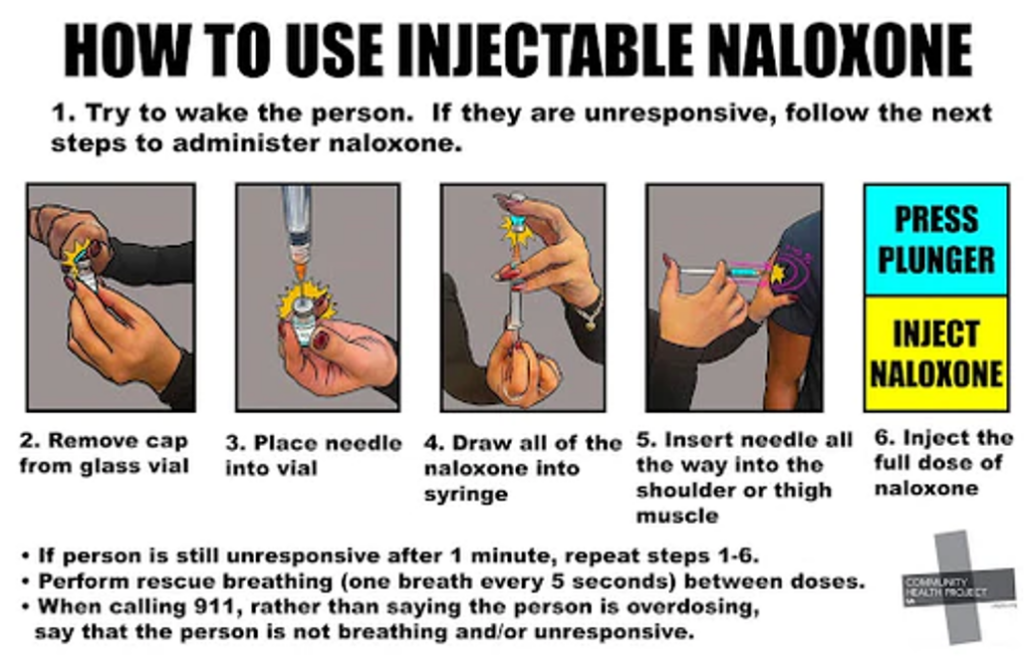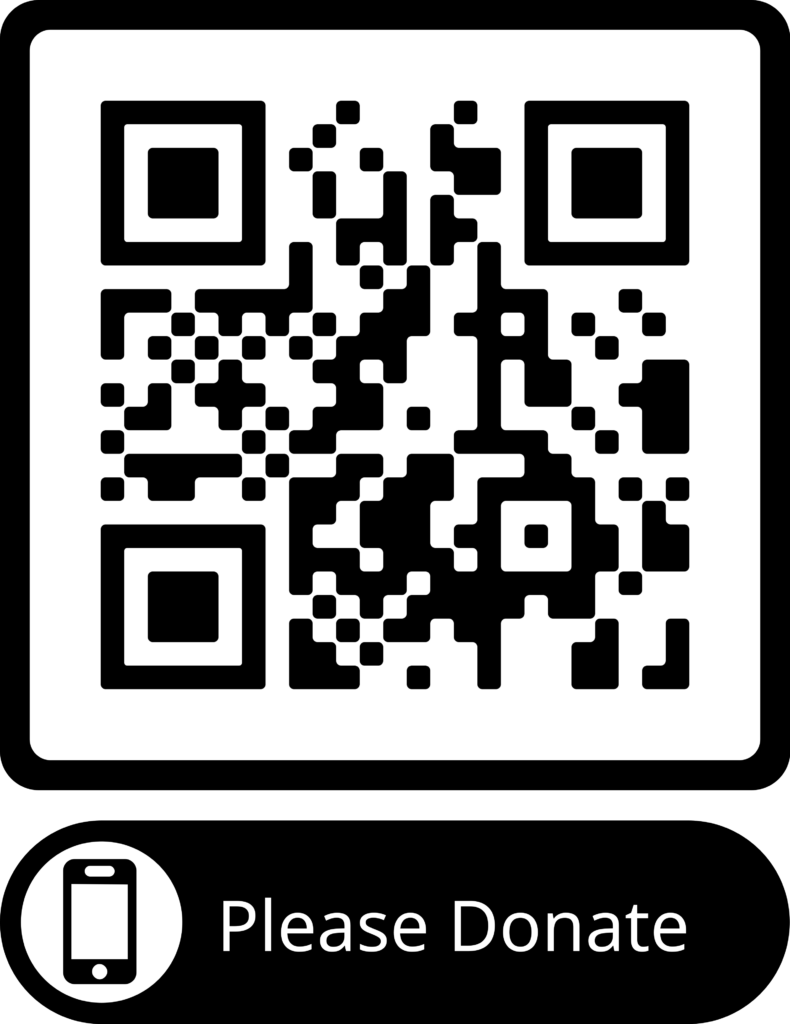HealthRIGHT 360 provides healthcare, dental care, substance use disorder treatment, and mental health services for those without insurance.
To speak with someone about receiving treatment, please call (800) 200-7181 for San Francisco programs and (213) 542-3838 for Los Angeles programs.
“We have to stop overdoses and save lives so that a person can recover. A dead person does not get a second chance at life.” – Dr. Vitka Eisen, President & CEO HealthRIGHT 360
What is naloxone?
Naloxone is a lifesaving, emergency medication, also known as an opioid antagonist, which can be used to reverse the effect of an opioid overdose when administered in a timely manner. HealthRIGHT 360 provides overdose prevention and response training with naloxone to staff at all our facilities.
What is an opioid overdose?
An opioid overdose is a medical emergency that occurs when a person takes an amount of an opioid drug, or combination of drugs, that is more than their body can process.
A person experiencing an opioid overdose can suffer from “opioid-induced respiratory depression,” which means the person’s breathing slows down, becomes irregular, and can even stop, resulting in loss of consciousness and potentially death.
How is naloxone administered?
Naloxone is relatively safe, effective, and easy to use when responding to a suspected opioid overdose. Naloxone can be delivered both via intranasal spray and injection.
Intranasal naloxone comes in pre-filled devices that spray medication into the nose, where it is quickly absorbed through the mucosal tissue. For intranasal Narcan spray , which is one of the more readily available intranasal naloxone products, the dosage for both adults and children is one spray (0.4mg) in one nostril.
Injectable naloxone (0.4mg/ml) is a solution that comes in vials (1ml or 10ml) and is administered via syringe into a muscle or under the skin. The injectable naloxone dosage is 0.4mg in adults, and 0.1 mg per kg body weight in children.
No matter the route of administration, it is important to receive training on how and when to use naloxone.
What is the difference between intranasal spray naloxone and injectable naloxone?
Both forms of naloxone are relatively safe, effective, and easy to use. The differences between the two administration routes are in the concentration of naloxone a dose contains – there is more naloxone in the intranasal spray as it must be absorbed, and less naloxone in the injectable as it enters the bloodstream. Other factors include availability, personal preference, and cost.
Injectable naloxone is less expensive to obtain. For experienced responders, injectable naloxone has the advantage that in administration a responder can choose to titrate (use less than a dose), which is done to prevent or reduce withdrawal symptoms in individuals who have an opioid use disorder.
How does naloxone work?
During an overdose, opioids can cause slowed, irregular, or stopped breathing, which may result in loss of consciousness and potential death. When administered as an overdose intervention, naloxone (as an opioid antagonist) displaces and blocks opioids from attaching to opioid receptors, temporarily stopping their effects and reversing the overdose. Naloxone saves lives because it can quickly restore normal breathing to a person experiencing an opioid overdose.
Can naloxone reverse an overdose that is not caused by an opioid?
Naloxone only works to counteract the effects of opioid drugs; it has no effect on reversing overdoses from other substances. Comparable overdose reversal medications for non-opioid drugs do not yet exist.
What happens if I administer naloxone when someone doesn’t need it?
If a person receiving a dose of naloxone has used drugs other than opioids, naloxone is not contraindicated, will have no harmful effects, and will not cause any adverse medical issues. Naloxone is not a controlled substance, and it is not addictive.
Who should carry naloxone?
In California, everyone is legally allowed to carry naloxone, give it to someone experiencing an overdose, and potentially save a life. It is especially important to carry naloxone if someone you know is at an increased risk for overdose.
California’s Good Samaritan and Liability laws protect people providing emergency medical care at the scene of a medical emergency, including the administration of naloxone during an overdose. You do not have to be a first responder or healthcare provider to reverse an opioid overdose with naloxone.
How do I get Naloxone/Narcan?
Anyone can obtain naloxone from a pharmacy or from a local organization that has a naloxone distribution program, such as a local syringe services program. The National Harm Reduction Coalition’s Naloxone Finder provides information on how to locate naloxone in the community.
The California Department of Health Care Services provides naloxone to qualified organizations to distribute naloxone within communities. Learn more by visiting the Naloxone Distribution Project.
Remedy Alliance / For The People can also help organizations navigate the complexities of establishing and scaling a naloxone distribution program.
If you are a person who uses drugs and you do not have a resource in your community, you may be able to access mail-based naloxone through Next Distro.
How can I administer naloxone?
Only use naloxone on someone if they are unconscious. To administer one dose of intranasal naloxone:
- Try to wake the individual. In a regular voice, ask, “Hello, can you hear me?” Use physical stimulation to see if they are awake.
- If the individual is unresponsive, remove the intranasal spray from the box, then peel open the back of an individual package to remove an intranasal spray device.
- Hold the spray with your thumb on the bottom of the plunger and your first and middle fingers on either side of the nozzle.
- DO NOT spray a test dose into the air to see if the device works; there is only one dose in each intranasal spray device.
- Tilt the person’s head back and provide support under the neck with your hand, gently insert the tip of the nozzle into either nostril until your fingers on either side of the nozzle touch the bottom of the person’s nose.
- Press the plunger firmly to release the dose of naloxone into the nose, then remove the intranasal spray from the nostril after delivering the dose.
- Continue to monitor the person’s breathing and vital signs. After two to three minutes, if there is no improvement, then additional doses of naloxone and rescue breathing may be needed.

To administer one dose of injectable naloxone:
- If you have a pre-filled naloxone syringe, it may come ready to use. Otherwise, if you have a vial and syringe, remove the cap from the glass vial containing the naloxone and remove the cap from the syringe.
- Place the needle into the vial.
- Pull on the plunger to slowly draw all the naloxone into the syringe.
- At a 90-degree angle, insert the needle all the way into the shoulder or thigh muscle.
- Slowly press the plunger and inject the full dose of naloxone.
- Continue to monitor the person’s breathing and vital signs. After two to three minutes, if there is no improvement, then additional doses may be needed.

Remember to safely dispose of needles and other equipment to prevent accidental injury or transmission of infections. You can use a sharps container or follow local public health guidelines for disposal.
Does rapidly administering multiple doses of naloxone help to reverse an overdose?
A common misconception is that administering a higher dose of naloxone, or multiple doses in quick succession, makes naloxone work faster. On average, naloxone takes one to three minutes to begin to take effect. If you administer higher doses or multiple doses of naloxone in quick succession during an overdose, it does not necessarily make it work any faster than if you give one dose.
How can someone access treatment for opioid use disorder?
To speak with someone about receiving treatment, please call (1800) –200-7181 for San Francisco programs and (213) –542-3838 for Los Angeles programs.
Substance Use Disorder Treatment Programs.
Our goal is safety, connection, and to prevent overdose deaths. It’s simple really – stop the dying, build authentic relationships, and connect people to care of any kind when it is sought. If you are able to support HealthRIGHT 360’s efforts with a contribution that is meaningful to you to allow us to provide overdose prevention programs/services and save lives in our communities, please donate today.


